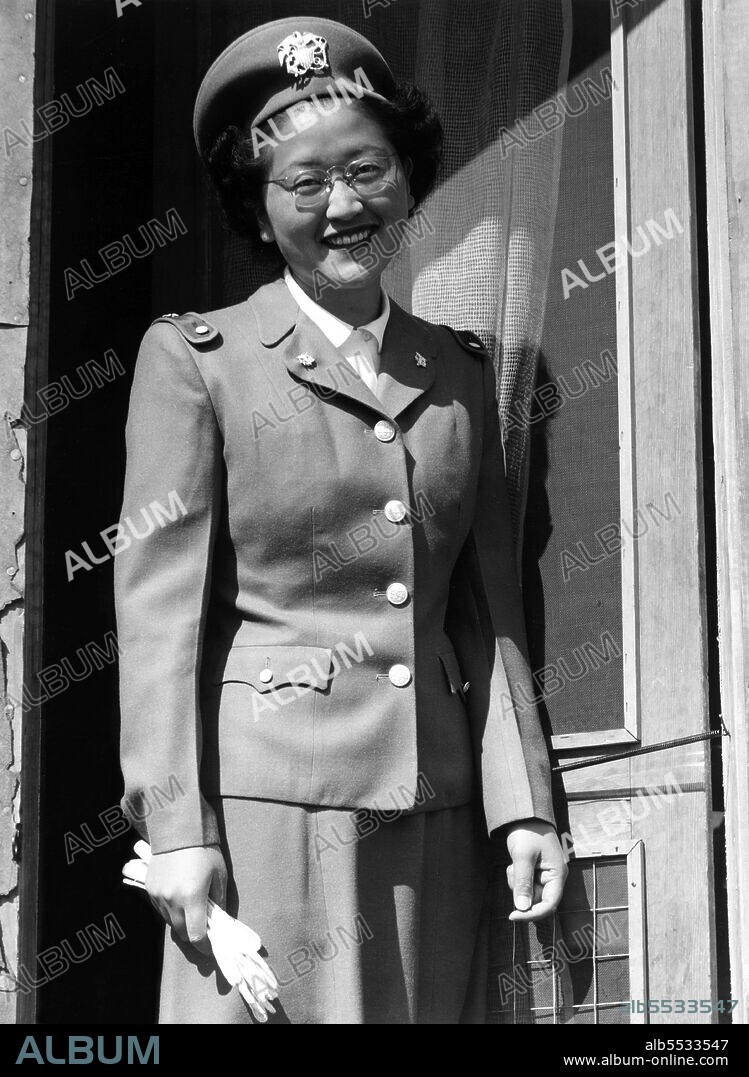alb5533547
USA / Japan: Japanese-American U. S. Naval cadet nurse, Kay Fukuda. Manzanar Japanese American Internment Camp, Ansel Adams,1943

|
Añadir a otro lightbox |
|
Añadir a otro lightbox |



¿Ya tienes cuenta? Iniciar sesión
¿No tienes cuenta? Regístrate
Compra esta imagen

Título:
USA / Japan: Japanese-American U. S. Naval cadet nurse, Kay Fukuda. Manzanar Japanese American Internment Camp, Ansel Adams,1943
Descripción:
Traducción automática: Manzanar es más conocido como el sitio de uno de los diez campos donde más de 110.000 estadounidenses de origen japonés fueron encarcelados durante la Segunda Guerra Mundial. Ubicado al pie de Sierra Nevada en el valle Owens de California, entre las ciudades de Lone Pine al sur e Independence al norte, está aproximadamente a 230 millas (370 km) al noreste de Los Ángeles. Mucho antes de que llegaran los primeros presos en marzo de 1942, Manzanar era el hogar de nativos americanos, que en su mayoría vivían en aldeas cercanas a varios arroyos de la zona. Los ganaderos y mineros establecieron formalmente la ciudad de Manzanar en 1910, pero la abandonaron en 1929 después de que la ciudad de Los Ángeles comprara los derechos de agua de prácticamente toda el área. Desde que salieron los últimos presos en 1945, ex presos y otras personas han trabajado para proteger Manzanar y establecerlo como Sitio Histórico Nacional para garantizar que la historia del sitio, junto con las historias de aquellos que fueron encarcelados injustamente allí, sean recordadas por generaciones actuales y futuras
Manzanar is most widely known as the site of one of ten camps where over 110,000 Japanese Americans were incarcerated during World War II. Located at the foot of the Sierra Nevada in California's Owens Valley between the towns of Lone Pine to the south and Independence to the north, it is approximately 230 miles (370 km) northeast of Los Angeles. Long before the first incarcerees arrived in March 1942, Manzanar was home to Native Americans, who mostly lived in villages near several creeks in the area. Ranchers and miners formally established the town of Manzanar in 1910, but abandoned the town by 1929 after the City of Los Angeles purchased the water rights to virtually the entire area. Since the last incarcerees left in 1945, former incarcerees and others have worked to protect Manzanar and to establish it as a National Historic Site to ensure that the history of the site, along with the stories of those who were unjustly incarcerated there, are remembered by current and future generations.
Crédito:
Album / Pictures From History/Universal Images Group
Autorizaciones:
Modelo: No - Propiedad: No
¿Preguntas relacionadas con los derechos?
¿Preguntas relacionadas con los derechos?
Tamaño imagen:
3600 x 4922 px | 50.7 MB
Tamaño impresión:
30.5 x 41.7 cm | 12.0 x 16.4 in (300 dpi)
Palabras clave:
AMERICAN • AMERICANA • AMERICANO • AMERICANOS • ASIA • ASIATICO • CALIFORNIA • ESTADOS UNIDOS • GUERRA DEL PACIFICO • HISTORIA • HISTORICO • JAPON • JAPONES • SEGUNDA GUERRA MUNDIAL
 Pinterest
Pinterest Twitter
Twitter Facebook
Facebook Copiar enlace
Copiar enlace Email
Email
